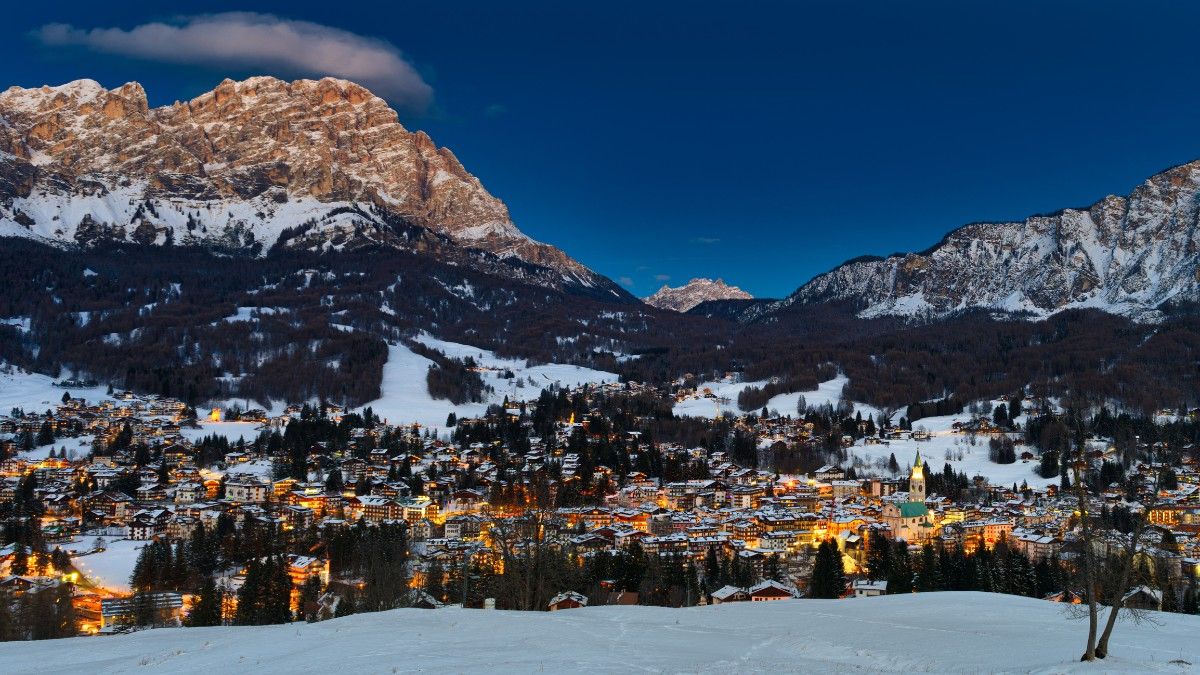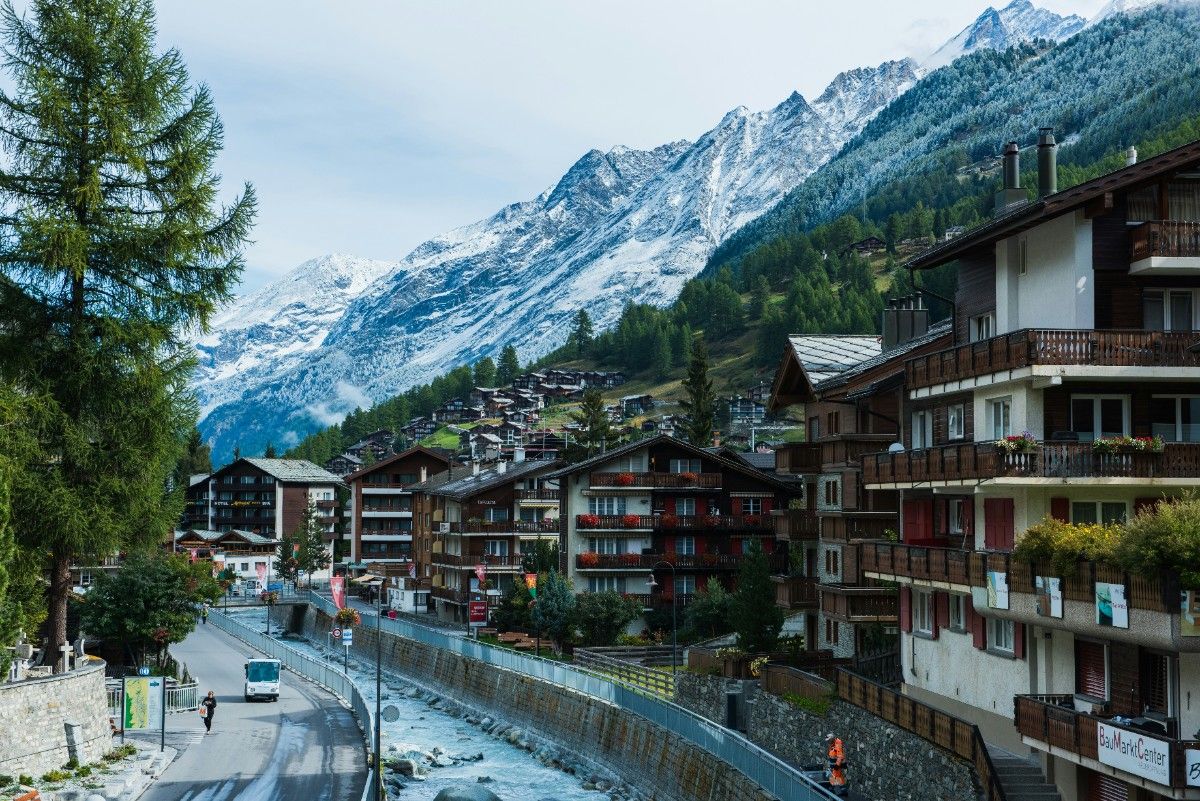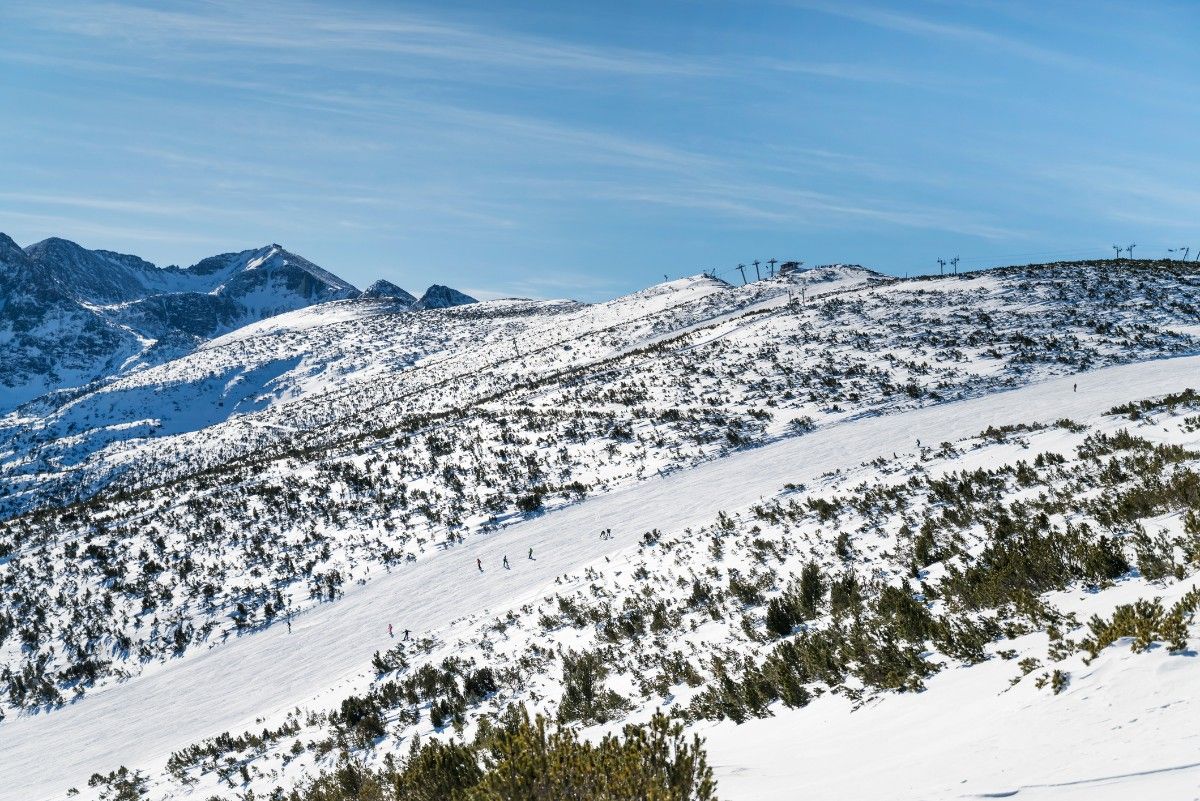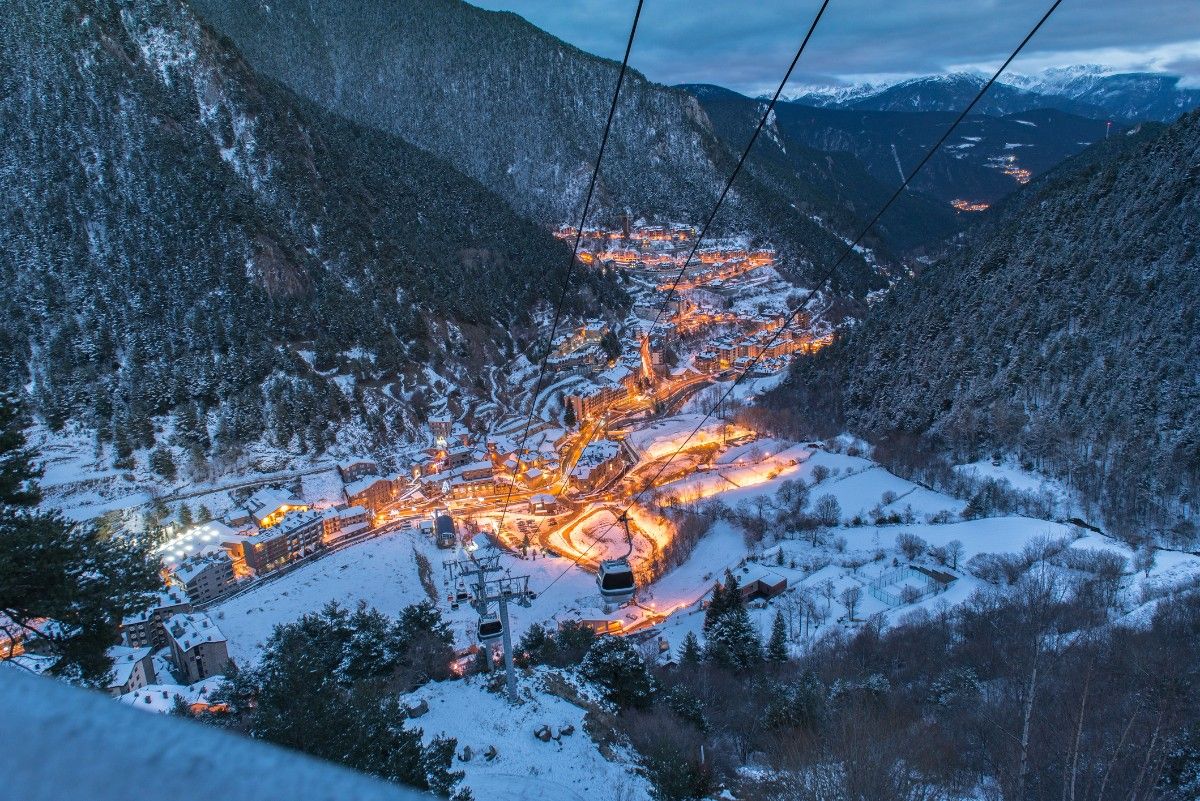From pristine slopes in the French Alps to budget-friendly runs in Bulgaria, European ski resorts offer an unmatched winter sports experience. This comprehensive guide explores the finest skiing destinations across the continent, providing essential information for both beginners and seasoned enthusiasts.
The Majestic Alps: French Ski Resorts
Premier Destinations in the French Alps
The French ski resorts stand as the crown jewels of European winter sports, with the Three Valleys dominating the landscape as the world's largest connected ski area. Courchevel, a standout among the best ski resorts in France, exemplifies luxury skiing with its 150 kilometres of immaculately maintained pistes. The resort's sophisticated snow-making systems ensure reliable conditions throughout the season, whilst its north-facing slopes preserve snow quality even during warmer periods. The resort's commitment to excellence extends beyond its slopes, featuring 11 Michelin-starred restaurants and exclusive boutiques that cater to discerning visitors.
The Val d'Isère-Tignes area, known as Espace Killy, presents an impressive 300 kilometres of marked runs suitable for all abilities. This area particularly shines for its high-altitude position, with slopes reaching 3,456 metres, guaranteeing exceptional snow conditions from late November through May. The modern lift system, including the revolutionary underground funicular, efficiently transports 41,000 skiers per hour, effectively eliminating queue times during peak periods. Recent infrastructure investments totalling €200 million have enhanced the resort's capacity whilst maintaining its authentic Savoyard charm.
Innovation and Technology in French Resorts
Modern French ski resorts lead the industry in technological advancement. Val Thorens, Europe's highest resort at 2,300 metres, employs cutting-edge snow management technology, including 100% piste coverage with snow-making capabilities. The resort's innovative Smart Ski Resort programme integrates artificial intelligence for real-time slope monitoring and maintenance, ensuring optimal skiing conditions throughout its extended season. This technological prowess extends to guest services, with automated lift passes and a sophisticated mobile application providing real-time updates on weather conditions, lift waiting times, and piste status.
Les Trois Vallées demonstrates the French commitment to interconnected skiing experiences. The area's sophisticated lift network seamlessly connects Méribel, Val Thorens, and Courchevel, offering skiers unprecedented access to 600 kilometres of pistes. The recently implemented Smart Mountain project utilises IoT sensors throughout the domain to monitor snow conditions, enabling precise grooming operations and optimal resource allocation. This dedication to innovation has established French resorts as industry leaders in sustainable winter sports tourism.
Historical Significance and Modern Evolution
Chamonix Mont-Blanc merits special attention for its pivotal role in winter sports history, having hosted the first Winter Olympics in 1924. The resort's evolution from a mountaineering hub to a world-class skiing destination reflects the broader development of French ski resorts. The Grands Montets sector continues to challenge expert skiers with its renowned off-piste opportunities, whilst the Brévent-Flégère area caters to intermediate skiers with wide, cruising runs. Recent infrastructure developments, including the new Planpraz gondola, have reduced summit access time to just six minutes, demonstrating the resort's commitment to modern efficiency whilst preserving its historical character.
Austrian Excellence: Premium Slopes and Traditional Charm
Traditional Heritage Meets Modern Infrastructure
Austria ski resorts masterfully blend sophisticated infrastructure with authentic Alpine culture. St. Anton am Arlberg, forming part of Austria's largest connected ski area, offers 305 kilometres of marked runs and 200 kilometres of off-piste terrain. The resort's snow reliability benefits from its position in the snow-rich northern Alps, with an average seasonal snowfall of 7 metres. Recent investments in high-speed chairlifts and gondolas have enhanced the resort's capacity whilst maintaining its traditional Austrian character. The area's commitment to sustainable tourism is evident in its extensive use of renewable energy and electric snow groomers.
Among the best ski resorts in Austria, Kitzbühel combines medieval charm with modern amenities. The resort's famous Hahnenkamm downhill race course, featuring an 85% gradient at the Mausefalle section, represents the ultimate challenge in competitive skiing. However, the resort's versatility shines through its extensive beginner areas and state-of-the-art ski schools employing the renowned Austrian teaching method. The recent €25 million investment in snow-making technology ensures reliable conditions throughout the season, even on its lower-altitude slopes.
Innovation in Austrian Ski Technology
Austria skiing resorts lead the industry in technological innovation, exemplified by Saalbach-Hinterglemm's sophisticated lift system connecting 270 kilometres of slopes. The resort's pioneering "Ski Circus" concept integrates modern technology with traditional hospitality, featuring automated lift gates and real-time slope condition updates through its dedicated mobile application. The area's commitment to innovation extends to its snow-making capabilities, with computer-controlled systems ensuring optimal snow production and distribution across the entire resort.
When exploring ski resorts in Austria, Ischgl stands out for its high-altitude terrain and remarkable snow reliability. The resort's cross-border connection with Swiss Samnaun creates an international skiing experience, whilst its advanced snow-making system covers 90% of runs, ensuring consistent conditions throughout the season. The resort's €45 million investment in new lift infrastructure has significantly enhanced uphill capacity whilst reducing energy consumption through the implementation of direct drive technology and solar power systems.
Training Excellence and Sport Development
Austrian resorts have long been synonymous with skiing excellence, and their commitment to training future generations continues this legacy. The Stubaier Glacier, operating year-round, serves as a crucial training ground for professional athletes and ambitious amateurs alike. The resort's modern infrastructure includes dedicated race training facilities and specialised coaching programmes utilising video analysis and biomechanical feedback systems. This focus on development has helped maintain Austria's position at the forefront of international skiing competition whilst providing exceptional facilities for recreational skiers of all abilities.
Italian Sophistication: The Dolomites and Beyond
The Dolomiti Superski Experience
The Italy ski resorts, particularly those within the Dolomiti Superski region, represent a masterpiece of winter sports infrastructure, encompassing 12 interconnected valleys and providing 1,200 kilometres of pistes served by 450 modern lifts. The Dolomites ski resorts showcase a unique combination of extraordinary scenery and exceptional skiing conditions, with the UNESCO World Heritage landscape creating an unparalleled backdrop for winter sports enthusiasts. The region's sophisticated snow-making system, covering 97% of the slopes, ensures reliable conditions throughout the season, whilst the integrated lift pass system allows seamless travel between valleys.
The technology underlying these resorts includes advanced RFID systems for contactless lift access, real-time slope monitoring through satellite imagery, and automated grooming systems that maintain optimal piste conditions. The region's commitment to sustainability is evident in its extensive use of renewable energy sources, with solar panels powering lift stations and electric vehicles serving resort operations. Recent investments totalling €100 million have further enhanced the area's infrastructure whilst preserving its distinctive cultural heritage.
Cortina d'Ampezzo: Olympic Heritage and Modern Innovation
Among the best ski resorts in Italy, Cortina d'Ampezzo stands as a testament to Italian skiing excellence. The resort's three distinct ski areas - Faloria-Cristallo, Tofana, and Cinque Torri - offer 120 kilometres of varied terrain catering to all abilities. As host of the 1956 Winter Olympics and the upcoming 2026 Games, Cortina continues to invest in world-class facilities, including a new €50 million lift system connecting previously separate skiing areas.
The resort's sophisticated snow-making technology ensures reliable conditions throughout the season, whilst its modern lift infrastructure, including the new 10-person Freccia nel Cielo gondola, provides efficient mountain access. Cortina's commitment to preserving its elegant atmosphere whilst embracing modern innovations has established it as a premier destination among skiing resorts worldwide. The resort's ski academy offers specialised programmes utilising video analysis and professional coaching, maintaining Italy's strong presence in international competition.
Val Gardena and Alta Badia: Technical Excellence
Ski resorts in Italy reach their technical pinnacle in the Val Gardena and Alta Badia regions. Val Gardena's 175 kilometres of local slopes and direct access to the Sella Ronda circuit demonstrate the sophisticated integration of natural terrain with modern infrastructure. The resort's innovative "DOLOMITI Superski" pass incorporates smart technology, providing real-time information about lift waiting times and slope conditions whilst tracking personal performance statistics.
Alta Badia exemplifies why Italy skiing resorts attract international acclaim. The area's unique geological formations create natural snow traps, whilst its modern lift system, including the new La Crusc 8-person chairlift, ensures efficient mountain access. The region's commitment to sustainability includes solar-powered lift stations, electric snow groomers, and sophisticated water management systems for snow production. Recent technological additions include automated avalanche monitoring systems and GPS-guided piste maintenance equipment.
Swiss Precision: Excellence in Alpine Infrastructure
Zermatt: Year-Round Excellence
Swiss ski resorts epitomise Alpine skiing excellence, with Zermatt leading through its year-round skiing opportunities and spectacular Matterhorn views. The resort's Klein Matterhorn lift reaches 3,883 metres, making it Europe's highest ski lift and ensuring reliable snow conditions even in summer months. The sophisticated infrastructure includes the world's highest 3S cableway, capable of operating in winds up to 120 kilometres per hour, and a revolutionary snow management system utilising artificial intelligence for optimal resource allocation.
The resort's commitment to sustainability sets industry standards, with solar-powered lift stations and electric resort vehicles contributing to its carbon-neutral status. Recent investments of CHF 200 million have enhanced the resort's capacity whilst maintaining its car-free environment. The integration of smart technology extends to personalised guest services, with RFID-enabled lift passes providing real-time tracking and automated entry to facilities throughout the resort.
Verbier and the Four Valleys
Among the premier Swiss ski resorts, Verbier demonstrates how sophisticated infrastructure can enhance the natural skiing experience. The resort's innovative snow management system employs GPS-guided snow groomers and real-time snow depth monitoring to maintain optimal piste conditions across its 410 kilometres of runs. The Four Valleys system, of which Verbier is the crown jewel, showcases Swiss engineering excellence through its integrated lift network and sophisticated guest management systems.
The resort's dedication to technical excellence includes automated avalanche control systems, high-definition cameras for real-time slope monitoring, and advanced weather forecasting technology. Recent developments have introduced artificial intelligence for predicting skier flow patterns, enabling optimal resource allocation during peak periods. The resort's training facilities include indoor simulators and video analysis systems, maintaining Switzerland's position at the forefront of winter sports development.
St. Moritz: Innovation in Alpine Luxury
St. Moritz, twice host of the Winter Olympics, continues to set standards for technical sophistication in winter sports. The resort's snow-making system can produce snow at temperatures up to 4°C, whilst its modern lift infrastructure, including the new Corviglia funicular, establishes industry benchmarks for comfort and efficiency. The resort's innovative approach extends to piste maintenance, with automated grooming systems ensuring consistent conditions across its varied terrain.
The integration of digital technology enhances the guest experience through real-time updates on weather conditions, lift status, and piste conditions, delivered through a sophisticated mobile application. The resort's commitment to excellence includes continuous infrastructure investment, with recent projects focusing on expanding high-altitude terrain and enhancing snow-making capabilities to ensure reliable conditions throughout the extended season.
Eastern European Value: Bulgaria and Poland's Rising Stars
Bulgarian Transformation and Investment
Bulgaria ski resorts have undergone a remarkable transformation in recent years, establishing themselves as compelling alternatives to traditional Alpine destinations. Bansko, the country's premier resort among Bulgarian ski resorts, has invested substantially in modern infrastructure, including a state-of-the-art gondola lift system capable of transporting 2,400 skiers per hour. The resort's sophisticated snow-making system now covers 90% of its marked runs, ensuring reliable conditions throughout the season. This technological advancement, combined with competitive pricing, has positioned Bansko as one of the cheapest ski resorts in Europe without compromising on quality.
The resort's recent €45 million investment programme has introduced automated lift gates, digital slope monitoring systems, and enhanced night skiing facilities. Modern ski schools employ internationally certified instructors and utilise video analysis technology for personalised instruction. The implementation of a sophisticated booking system and resort management software has streamlined the guest experience, whilst maintaining the authentic charm that makes Bulgarian resorts distinctive.
Borovets and Pamporovo: Traditional Charm Meets Modern Efficiency
Among ski resorts in Bulgaria, Borovets combines natural snow reliability with contemporary amenities. The resort's position on the northern slopes of the Rila Mountains ensures excellent snow preservation, whilst its modern lift system rivals more expensive European destinations. Recent developments include new high-speed quad chairlifts and expanded snow-making capabilities, demonstrating the resort's commitment to competing with established Alpine destinations.
Pamporovo exemplifies the evolution of Bulgaria ski resorts through its modern ski school, featuring video analysis technology and English-speaking instructors trained to international standards. The resort's investment in snow-making technology ensures reliable conditions throughout its December-to-April season. The integration of digital technologies, including automated lift passes and real-time slope condition monitoring, has enhanced the guest experience whilst maintaining competitive pricing structures.
Poland's Emerging Winter Sports Scene
Poland ski resorts, particularly in the Tatra Mountains, have emerged as significant players in the Eastern European winter sports market. Zakopane, Poland's winter sports capital, combines modern infrastructure with traditional mountain culture. Recent investments totalling PLN 200 million have introduced new high-speed chairlifts, enhanced snow-making capabilities, and improved slope maintenance equipment.
The resort's commitment to development extends to its training facilities, with modern ski schools offering instruction in multiple languages. The implementation of digital technologies, including automated ticket systems and slope monitoring equipment, demonstrates Poland's dedication to competing with established winter sports destinations. The preservation of traditional mountain architecture alongside modern amenities creates a unique atmosphere that attracts visitors seeking an authentic Eastern European skiing experience.
Nordic Excellence: Finland's Unique Skiing Experience
Arctic Advantages and Technical Innovation
Finland ski resorts offer a distinctive Arctic skiing experience, with Levi leading the way through its combination of reliable snow conditions and modern infrastructure. The resort's position above the Arctic Circle ensures a long season from October to May, whilst its sophisticated lighting system enables skiing during the polar night period. Recent investments of €30 million have introduced automated snow-making systems capable of operating in temperatures as low as -30°C, alongside modern lift infrastructure including Finland's first eight-person chairlift.
The resort's commitment to sustainability includes 100% renewable energy usage and electric snow grooming vehicles. Advanced snow management systems utilise GPS technology and artificial intelligence to optimise grooming operations, whilst automated weather stations provide real-time data for snow production. The integration of smart technology extends to guest services, with RFID-enabled lift passes and a sophisticated mobile application providing real-time updates on conditions and facilities.
Creating the Perfect Learning Environment
Finnish resorts excel in beginner-friendly facilities, making them among the best ski resorts for beginners in Europe. Ylläs, Finland's largest ski resort, offers 63 kilometres of varied terrain, with dedicated learning areas featuring magic carpet lifts and gentle gradients ideal for novice skiers. The resort's innovative approach to instruction includes heated learning areas and specialised equipment designed for Arctic conditions.
The implementation of the "Snow-How" programme demonstrates Finland's commitment to technical excellence in winter sports. This comprehensive approach combines traditional Nordic skiing expertise with modern technology, including automated snow depth monitoring systems, GPS-guided piste maintenance, and real-time slope condition updates delivered through resort mobile applications.
Ruka: Setting Standards for Arctic Skiing
Ruka exemplifies the technical sophistication of Finnish winter sports facilities through its comprehensive snow-making system and modern lift infrastructure. The resort's innovative approach to Arctic skiing includes heated lift seats, wind protection systems, and specialised lighting solutions for extended operating hours during the polar night. Recent developments have introduced artificial intelligence for managing snow production and grooming operations, ensuring optimal conditions throughout the extended season.
The resort's dedication to sustainable operations includes comprehensive recycling programmes, energy-efficient buildings, and electric vehicle charging infrastructure. The integration of digital technology enhances the guest experience through automated ticket systems, real-time capacity monitoring, and sophisticated slope management tools. These innovations, combined with the unique Arctic environment, create an unparalleled winter sports experience that sets Finnish resorts apart from traditional Alpine destinations.
Affordable Excellence: Andorra and Eastern Alternatives
Andorra's Rise to Prominence
The Andorra ski resort options have transformed dramatically over the past decade, with Grandvalira leading the charge as the country's largest resort. Offering 210 kilometres of pistes served by modern lifts, including six-person chairlifts and gondolas, Grandvalira demonstrates how cheapest ski resorts in Europe can deliver premium experiences. The resort's significant investment in snow-making technology, covering 98% of skiable terrain, ensures reliable conditions throughout the season, whilst sophisticated lift systems capable of transporting 100,000 skiers per hour minimize queue times even during peak periods.
Recent infrastructure developments totalling €50 million have introduced automated RFID lift passes, heated seats on chairlifts, and comprehensive slope monitoring systems. The resort's commitment to value extends to its ski schools, where multilingual instructors utilise video analysis and digital tracking systems to enhance learning experiences. This combination of modern amenities and competitive pricing has established Andorra as a premier destination for cost-conscious skiers seeking quality infrastructure.
Vallnord-Pal Arinsal: Value Without Compromise
Among Andorra ski resorts, Vallnord-Pal Arinsal demonstrates how budget-friendly doesn't mean basic. The resort's modern infrastructure includes RFID lift passes, automated entry gates, and comprehensive snow-making coverage, whilst its ski school employs internationally certified instructors. Recent investments have introduced new high-speed chairlifts and expanded night skiing facilities, enhancing the resort's appeal to both beginners and intermediate skiers.
The implementation of sophisticated slope management systems, including GPS-guided grooming equipment and automated snow production, ensures consistent conditions throughout the season. The resort's innovative approach to guest services includes digital lift passes integrated with mobile applications, providing real-time updates on weather conditions, lift status, and piste conditions. These technological advancements, combined with competitive pricing, establish Vallnord-Pal Arinsal as a leading destination for value-conscious skiers.
Eastern European Alternatives
Beyond Bulgaria, Eastern European resorts offer compelling alternatives for cost-conscious skiers. Slovenia's Kranjska Gora combines value pricing with modern facilities, including recently upgraded lifts and snow-making systems. The resort's position in the Julian Alps ensures reliable natural snowfall, supplemented by technical snow when necessary. Recent developments have introduced automated ticket systems, digital slope monitoring, and enhanced night skiing facilities.
The Czech Republic's Špindlerův Mlýn exemplifies how Eastern European resorts compete with Western alternatives through continuous infrastructure investment. The resort's modern lift system, including new eight-person chairlifts, rivals more expensive Alpine destinations, whilst its snow-making capabilities ensure reliable conditions throughout the season. The integration of digital technologies, including automated lift passes and real-time slope condition monitoring, enhances the guest experience whilst maintaining competitive pricing structures.
Hidden Gems: Scotland and Lesser-Known Destinations
Scottish Highland Excellence
Scotland ski resorts offer unique skiing opportunities within the British Isles, with Glencoe Mountain Resort leading through innovative approaches to variable conditions. The resort's modern lift system and snow-making capabilities provide reliable winter sports opportunities when conditions permit. Recent investments have introduced innovative all-weather surfaces for early and late season skiing, alongside sophisticated snow-making systems capable of operating in marginal conditions.
The resort's commitment to development includes new high-speed chairlifts, enhanced slope monitoring systems, and improved guest facilities. The integration of digital technology enables real-time updates on conditions and facilities, whilst automated snow-making systems maximise opportunities for skiing throughout the winter season. These developments demonstrate Scotland's dedication to providing quality skiing experiences despite challenging weather patterns.
Nevis Range: Technical Innovation
The Nevis Range demonstrates the technical capabilities of Scottish winter sports facilities through its artificial snow production system and modern lift infrastructure. The resort's unique location, featuring Britain's only mountain gondola, provides access to both groomed pistes and challenging off-piste terrain. Recent investments have introduced sophisticated snow-making equipment, automated grooming systems, and enhanced mountain safety facilities.
The resort's innovative approach includes real-time weather monitoring systems, automated snow depth measurements, and comprehensive slope management tools. The implementation of digital technologies enhances the guest experience through automated ticket systems, real-time capacity monitoring, and sophisticated slope management tools. These developments establish Nevis Range as a technically advanced winter sports destination within the British Isles.
Emerging Destinations
Lesser-known destinations across Europe continue to develop their winter sports infrastructure, offering unique alternatives to established resorts. The Carpathian Mountains in Romania showcase this evolution through resorts like Poiana Brașov, where recent investments have introduced modern lift systems and comprehensive snow-making capabilities. These developments demonstrate how emerging destinations can compete with established resorts through strategic infrastructure investment and competitive pricing.
Similarly, Macedonia's Popova Shapka exemplifies the potential of lesser-known destinations. The resort's recent development programme has introduced new chairlifts, enhanced snow-making systems, and improved guest facilities. The preservation of authentic mountain culture alongside modern amenities creates a unique atmosphere that attracts visitors seeking alternatives to traditional ski destinations. These emerging resorts often provide advantages beyond cost savings, including shorter lift queues and more personal instruction opportunities, whilst their continued investment in infrastructure demonstrates a commitment to competing with established destinations.
European ski resorts represent an unparalleled diversity of winter sports experiences, from the prestigious slopes of the French Alps to the emerging destinations in Eastern Europe. Each region brings its own unique characteristics to the international skiing landscape: French sophistication and extensive interconnected domains, Austrian technical excellence and traditional charm, Italian dramatic landscapes and cultural richness, Swiss precision and high-altitude reliability, Bulgarian value and rapid development, Finnish Arctic uniqueness, Andorran accessibility, and Scottish determination in challenging conditions.
As these resorts continue to evolve, their commitment to technological innovation, sustainable practices, and enhanced guest experiences remains paramount. Whether seeking the best ski resorts in Europe for advanced terrain, the best ski resorts for beginners, or the cheapest ski resorts in Europe, the continent offers options for every preference and budget. This rich tapestry of winter sports destinations ensures that European skiing maintains its position at the forefront of global winter tourism, providing unforgettable experiences for generations of snow sports enthusiasts.
Related Articles

Let us know you agree to cookies
We use marketing, analytical and functional cookies as well as similar technologies to give you the best experience. Third parties, including social media platforms, often place tracking cookies on our site to show you personalised adverts outside of our website.
We store your cookie preferences for two years and you can edit your preferences via ‘manage cookies’ or through the cookie policy at the bottom of every page. For more information, please see our cookie policy.










